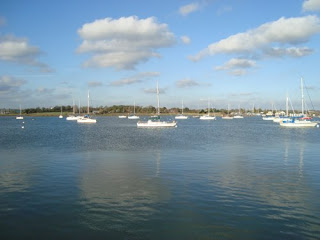 Reid's Scnooner, 'Anne'
Reid's Scnooner, 'Anne' Reid and Soayna
Reid and SoaynaReid Stowe has been at sea for 920 days aboard his 70 foot 60 ton schooner with the aim of completing over 1000 days of self-sufficiency away from land. He set sail from New Jersey on 21st April, 2007 with enough food to last him and his girlfriend, Soanya Ahmud, for three years, but she became gravely ill and she was taken ashore at Perth through the assistance of the Royal Perth Yacht Club. She subsequently gave birth to a baby boy on 19th July, 2008. Reid continued the voyage alone in the spirit of Bernard Moitessier who had been his mentor. Moitessier became famous after retiring from The Sunday Times Golden Globe Race in 1968 whereupon he continued sailing to Polynesia, to complete a non-stop passage of 37,000 miles.
It took Stowe, along with his family and friends 18 months to build his Feralite and steel mesh yacht, which was launched in 1982. Although the yacht was not completed, he and his then wife, Iris and baby daughter Viva, sailed to the Carribean. While en route they worked on the ornate wood carved interior. After changing the name of his yacht from ‘Tantra’ to ‘Anne’, in honour of his mother, Stowe and a crew of eight sailed the waters of the Antarctic Peninsula, where they experienced winds of over 100 mph and challenging conditions when navigating through ice packs. In 1999 he married a new wife, Laurence Guillem.
One of Reid’s ambitions was to be at sea longer than the Australian, Jon Sanders, who sailed around the world three times between 1986 and 1988, taking 657. This Reid has achieved, but a major objective was to explore the depths of his spirituality by seeking God, peace and love. While in the Atlantic he deliberately sailed a course forming the shape of a heart. From the time of meeting Moitessier who practised Yoga, Reid has explored various forms of Yoga and he has been an avid eclectic of Eastern religions in his search for a spiritual dimension to his life.
Whatever view you take regarding Reid Stowe, you cannot deny his indomitable courage, perseverance and single-mindedness to achieve his goal. I truly hope that he will find the one and only true God, the God of the Bible.
Reid's Web Site
http://www.1000days.net















































